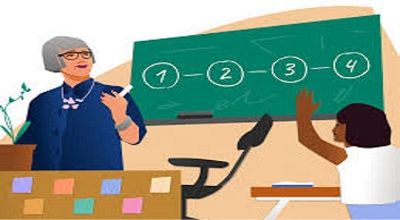Reflection Strategies To Help Students
Reflection Strategies To Help Students: While there isn’t a universal list of the “best” reflection strategies, as effectiveness can vary based on individual preferences and learning styles, here are 16 reflection strategies that educators often find valuable for helping students retain information. Keep in mind that the latest strategies may continue to emerge as education research progresses:
Journaling:
- Encourage students to keep reflective journals, where they can record thoughts, questions, and insights related to their learning experiences.
Think-Pair-Share:
- Have students think about a topic individually, discuss it with a partner, and then share their thoughts with the class. This process encourages deeper thinking.
Exit Tickets:
- Use brief written reflections as exit tickets at the end of a lesson to gauge student understanding and identify areas that may need further clarification.
One-Minute Papers:
- Give students a minute to write down the most important concept they learned during a lesson. This quick reflection can help consolidate learning.
Concept Mapping:
- Ask students to create visual representations of the connections between different concepts they’ve learned, helping to reinforce relationships between ideas.
Socratic Seminars:
- Facilitate student-led discussions where they explore and analyze complex topics, encouraging critical thinking and reflection.
Peer Reviews:
- Have students review and provide feedback on each other’s work, promoting self-awareness and a deeper understanding of their learning process.
Online Discussion Forums:
- Utilize digital platforms for asynchronous discussions, allowing students to reflect on their learning and respond to peers’ insights.
Video Reflections:
- Incorporate video submissions where students can verbally articulate their thoughts, allowing for a more personal and expressive form of reflection.
Mindfulness Practices:
- Integrate mindfulness activities or meditation techniques to help students focus, reduce stress, and reflect on their learning experiences.
Gallery Walks:
- Display student work around the classroom, and have students walk around to observe and reflect on their peers’ efforts and insights.
Interactive Notebooks:
- Encourage students to create interactive notebooks that include summaries, reflections, and additional resources related to the content.
Role Reversal:
- Allow students to take on the role of the teacher by explaining concepts to their peers. This not only reinforces their understanding but also promotes reflection.
Meta-Cognitive Strategies:
- Teach students about meta-cognition and guide them to reflect on how they learn best, encouraging them to adapt and refine their study habits.
Digital Portfolios:
- Have students create digital portfolios showcasing their work, achievements, and reflections throughout the course, fostering a sense of accomplishment.
Feedback Loops:
Implement regular feedback loops where students receive input on their progress, enabling them to adjust their learning strategies and reflect on their growth.
Final Words
Finally, the effectiveness of these strategies depends on the context, subject matter, and the needs of individual students. Experimenting with a combination of these reflection strategies may provide the best results in helping students retain information. Additionally, staying updated on the latest education research can offer insights into emerging reflection techniques.
